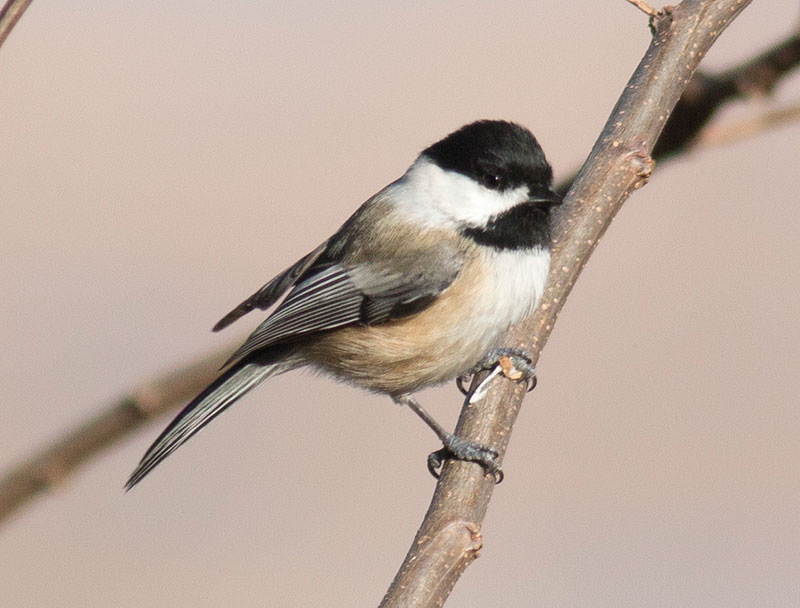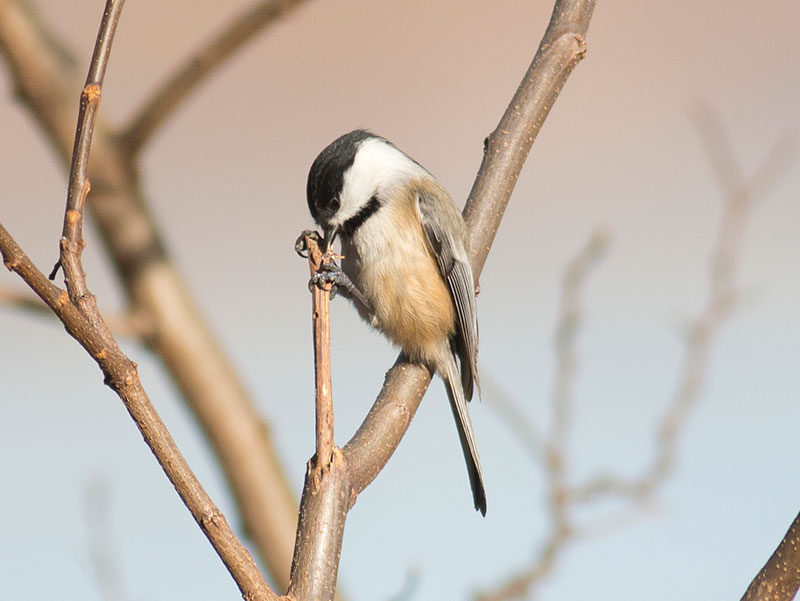Black-capped Chickadee
2/7/16
By David Brown
In honor of next weekend's Great Backyard Bird Count, this week I want to feature a local favorite: the black-capped chickadee. It is hard not to smile when you see a chickadee. With an oversized head and outgoing personality, a chickadee swoops onto your feeder, steals a seed, and makes an immediate retreat to the safety of a limb. When at natural food sources there seems to be no limit to the angles that chickadees can climb and hang. The Lycoming Audubon Society logo features a black-capped chickadee hanging upside-down in a typical acrobatic pose.

Black-capped Chickadee
The black-capped chickadee is found all across Pennsylvania except for some southern portions of the state where it is replaced by the very similar Carolina chickadee. However, any chickadee in our area can be assumed to be a black-capped. They have a length of about 5.5 inches and a wingspan of about 7.75 inches. Overall they give the impression of being a small bird with a long tail.
The black-capped chickadee is found in deciduous and mixed forests. It often prefers edge habitat but can also be found in the forest interior. The species is common in parks and suburban yards, often visiting bird feeders. It is nonmigratory, except for occasional winter irruptions when individuals from the north end of the range go further south.
The black-capped chickadee is a cavity nesting species. In addition to small natural cavities, chickadees will also nest in man-made boxes. While often thought of as seed eaters, in the warmer months the majority of their diet comes from insects and other animal foods. At feeders, they particularly like sunflower seeds and suet.

Black-capped Chickadee
The black-capped chickadee is a helpful species for birders. Other species often flock with chickadees, especially in winter, and it is easy to get chickadees riled up by mimicking alarm sounds or whistling a screech-owl call. Chickadees are very bold and curious and will often land so close that you can nearly reach out and touch them. Once the chickadees get exciting and start giving their own “chickadee-dee-dee” alarm call many other birds will fly in to see what is going on.
The Second Atlas of Breeding Birds in Pennsylvania, which was conducted from 2004 to 2009, estimated a total of 810,000 pairs of black-capped chickadees in Pennsylvania, ranking it as the fifteenth most abundant breeder in the state.
If you enjoy watching chickadees and other common birds, I recommend participating in next weekend's Great Backyard Bird Count. This is a joint project of the Cornell Lab of Ornithology, the National Audubon Society and Bird Studies Canada to collect bird data from the general public. To participate you simply watch birds for at least 15 minutes at home or any other location and submit a list of the bird species you identify. The count runs February 12-15 this year. More information can be found at http://gbbc.birdcount.org/